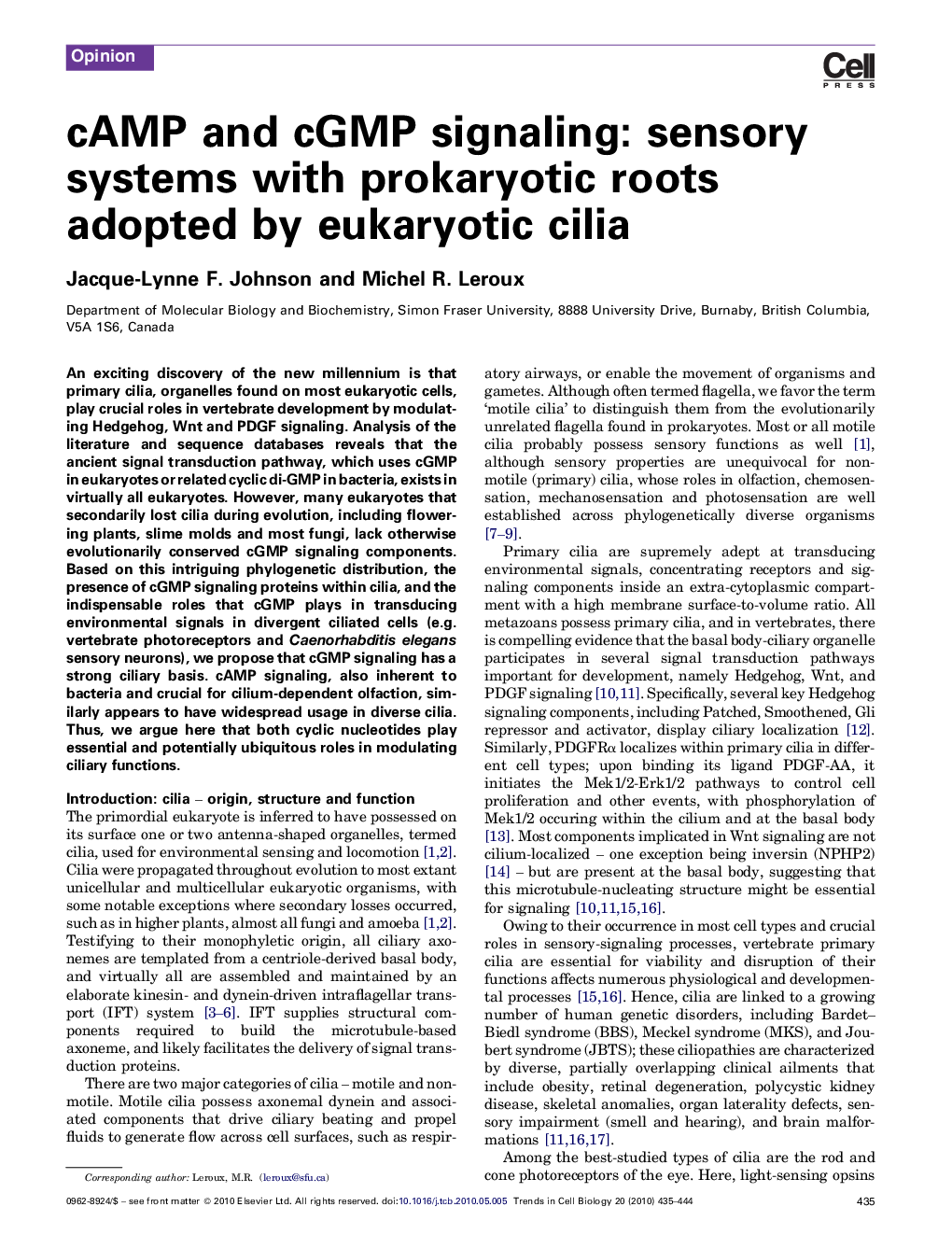| Article ID | Journal | Published Year | Pages | File Type |
|---|---|---|---|---|
| 2204849 | Trends in Cell Biology | 2010 | 10 Pages |
An exciting discovery of the new millennium is that primary cilia, organelles found on most eukaryotic cells, play crucial roles in vertebrate development by modulating Hedgehog, Wnt and PDGF signaling. Analysis of the literature and sequence databases reveals that the ancient signal transduction pathway, which uses cGMP in eukaryotes or related cyclic di-GMP in bacteria, exists in virtually all eukaryotes. However, many eukaryotes that secondarily lost cilia during evolution, including flowering plants, slime molds and most fungi, lack otherwise evolutionarily conserved cGMP signaling components. Based on this intriguing phylogenetic distribution, the presence of cGMP signaling proteins within cilia, and the indispensable roles that cGMP plays in transducing environmental signals in divergent ciliated cells (e.g. vertebrate photoreceptors and Caenorhabditis elegans sensory neurons), we propose that cGMP signaling has a strong ciliary basis. cAMP signaling, also inherent to bacteria and crucial for cilium-dependent olfaction, similarly appears to have widespread usage in diverse cilia. Thus, we argue here that both cyclic nucleotides play essential and potentially ubiquitous roles in modulating ciliary functions.
